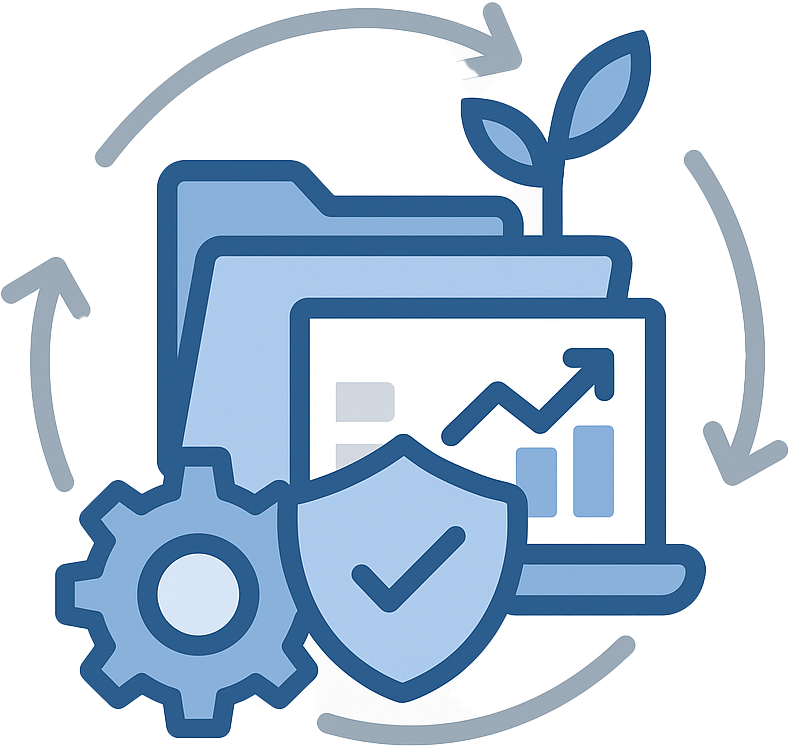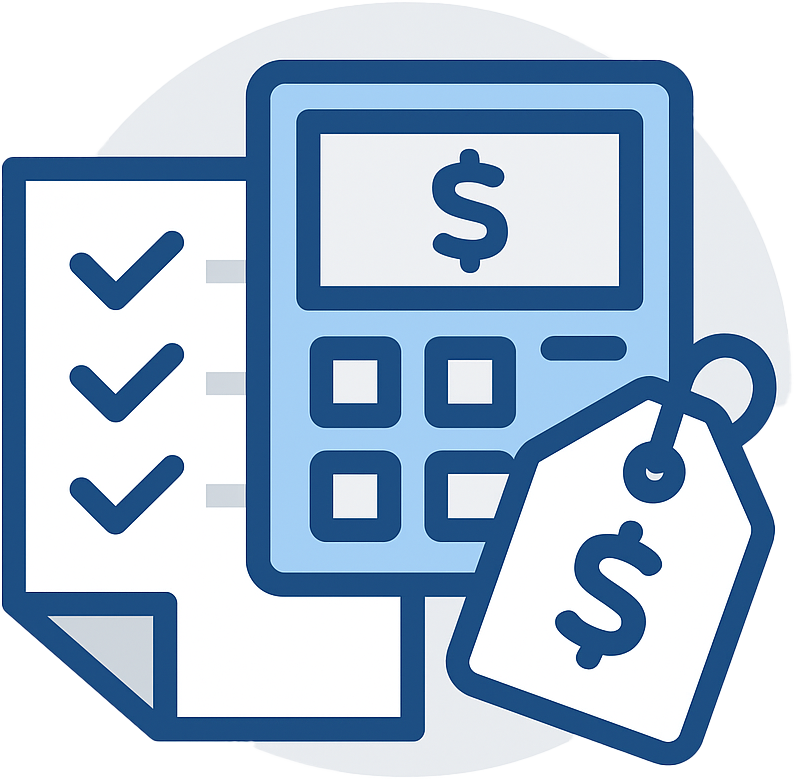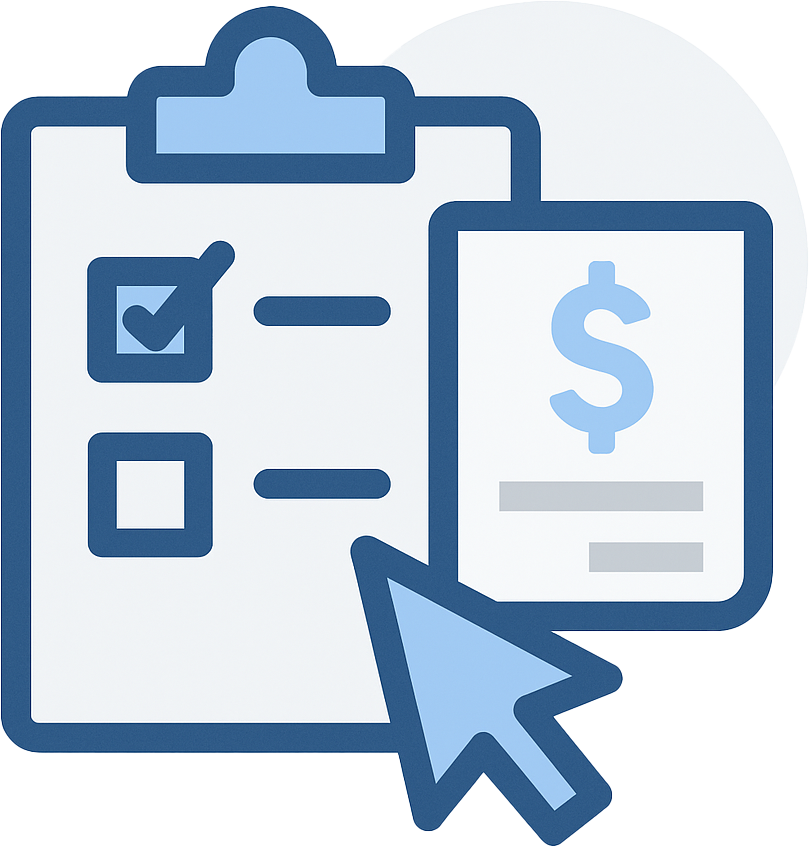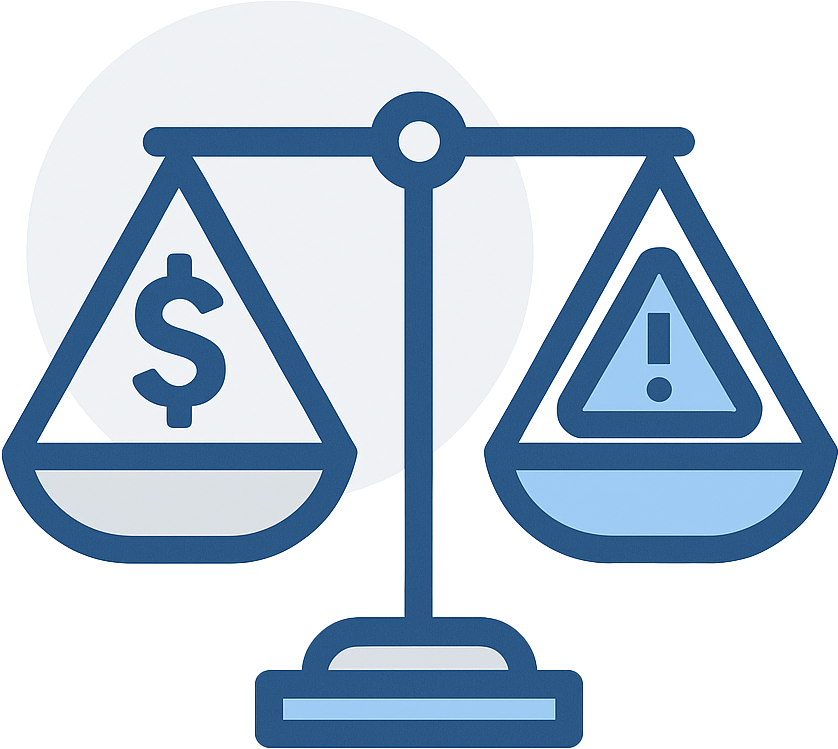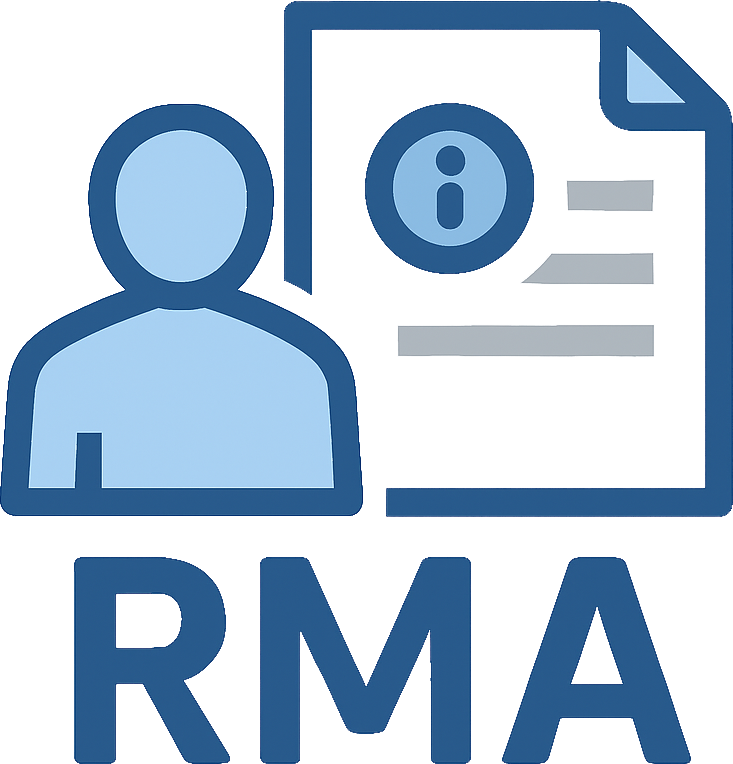Failing a Stormwater Sample in North Carolina? Here’s What to Know About the Tiered Response System
If you’re operating under a North Carolina stormwater general permit, and you’ve received one or more failing sample results, it can feel overwhelming. You might be wondering what that failure means for your permit, what the State expects from you now, and how to respond without making the situation worse.
In a lot of cases, getting a failing result puts your facility into what North Carolina calls the “tiered response” system, basically a step-by-step process that kicks in when your stormwater results aren’t where they should be. If you’re not familiar with what that means, or if you’ve already gotten a letter and have no idea what Tier 1, 2, or 3 even is, you’re not alone.
The good news? You’re not stuck - but you do need to know what’s coming. In this article, we’ll explain what the system is, what actions are required at each tier, and how to chart a path out of it. Our goal is to help you understand what’s happening with your stormwater results, what to do next, and where to turn if you need help (reach out to us!). And with that, let’s jump in!
Table of Contents
The Basics: How North Carolina NPDES Stormwater Permits and the Tiered System Work
Under the National Pollutant Discharge Elimination System (NPDES), the North Carolina Department of Environmental Quality (NCDEQ) requires certain types of facilities to follow a tiered response protocol when pollutant levels in stormwater discharges exceed benchmark thresholds. These benchmark exceedances aren’t just administrative, they trigger real, required next steps.
The short version is this - if you get bad results on your stormwater samples, there are some set rules that you'll need to follow until things improve. If your facility is covered by an NPDES stormwater general permit in North Carolina, this probably applies to you. That includes a wide range of industries like asphalt plants, concrete batch plants, marinas, metal fabricators, recycling facilities, and others. If you’re permitted under one of these general stormwater permits, the tiered response process is part of your compliance obligations.

How North Carolina NPDES Benchmarks and Exceedances Work With The Tiered System
NPDES permits in North Carolina require facilities to conduct routine sampling, lab analysis, and benchmark monitoring of stormwater discharges. Typically, you’re testing for pollutants such as Total Suspended Solids (TSS), pH, Oil & Grease, and metals like Copper or Zinc.
Each of these pollutants has an associated benchmark value listed in your NPDES permit. Think of this number as the maximum level allowed before your results trigger a problem. While benchmarks aren’t legally enforceable in the same way as effluent limits, for all practical purposes, they function the same, if your result goes over that number, you’re out of bounds.
For example, if your permit includes a benchmark value of 100 mg/L for TSS and your sample result comes back at 250 mg/L (or even 101!) that’s considered a benchmark exceedance, and it automatically initiates the tiered response protocol.
So what does that process actually look like? The tiered response system is a three-step framework designed to help facilities identify problems, make corrections, and get back into compliance. With each tier, the required actions become more involved, aiming to ensure that permit-holders are actively working to reduce pollutant levels in their stormwater discharge.

What Every Tier Has in Common: Key Requirements You Need to Know
Before we get into what each specific tier means, there are a few things that apply across the board, no matter who you are or where you fall. Let’s dip our toes into a little more background here, then we’ll get into the tiers themselves.
First, almost all stormwater general permits in North Carolina require quarterly monitoring. That means at least one stormwater sample every three months, testing for pollutants specific to your industry. However, if your facility enters a tiered status, that frequency can increase up to monthly monitoring - which means a sample every month, no excuses. And yeah, that’s a lot. More work, more lab costs, more time spent chasing down sample windows. It’s one of the biggest reasons you want to avoid tiered status if you can.
Now, the good news! You can get out of monthly monitoring. Your permit typically lets you drop back down to quarterly if you get three good results in a row, meaning three straight months where your sample results come in below the benchmark. Do that, and you’re back to business as usual.
Another big thing? You have to notify your NCDEQ Regional Office when you enter a tier. This isn’t optional. You’ll need to send in the right paperwork saying what pollutant you exceeded, what tier you’re in, and a few other details. It’s one of the first steps in showing you’re taking the process seriously.
You’ll also need to do a site inspection and put together a Corrective Action Plan - basically, figuring out what went wrong and how you’re going to fix it. You'll need to get to the bottom of why your samples are bad before you can start to make any changes. This needs to be done by someone who knows what they’re doing, and it should include real steps to clean up the issue.
And last but not least, your SWPPP (Stormwater Pollution Prevention Plan) needs to be updated. That plan should already be kept up to date anyway, but once you’re in a tier, you’ll need to make sure it shows the exceedance, the fixes you’re planning, and any changes you’ve made.
So yeah, it’s a lot. But knowing these baseline expectations makes it easier to wrap your head around what’s coming next.

Tier 1 for North Carolina NPDES Permits Explained
Alright, let’s talk about what actually happens when you hit Tier 1. It's the first level of North Carolina’s tiered response system, and it kicks in as soon as you exceed a benchmark for any pollutant during a single monitoring period. One bad result - that’s all it takes. And it only applies to the parameter you went over on. So if, say, your pH is fine but your Total Suspended Solids (TSS) is too high, you’re in Tier 1 just for TSS.
Now the good news again! Tier 1 doesn’t usually mean you’re bumped up to monthly monitoring. For most permits, you can stay on quarterly sampling, which is a huge relief. Definitely double-check your specific permit to confirm, but in most cases, you don’t have to start testing every month (yet). Here’s what else you need to do in Tier 1:
- Complete a Tier 1 Evaluation within 30 days of getting your lab results. This means looking at your site, your operations, and your stormwater controls to figure out what might have caused the exceedance.
- Notify your NCDEQ Regional Office that you’re in Tier 1. They’ll want to know what pollutant triggered it and what you’re doing about it.
- Create a Corrective Action Plan (CAP) and put it into action. This needs to happen within 60 days of the sample results coming back. Your plan should spell out what changes you're making to address the issue.
- Update your SWPPP to reflect everything. That includes what you found in your evaluation, any actions you’ve taken, and any updates to site diagrams, drainage maps, or control measures. If you’re fixing or adding anything, your plan needs to show that.
Tier 1 isn’t the end of the world, it’s more of a warning shot. But you still need to take it seriously and show you’re doing what your permit requires.

Tier 2 for North Carolina NPDES Permits Explained
If you’ve made it to Tier 2, it means the same pollutant has exceeded its benchmark twice in a row - two consecutive bad results for that parameter, and you’re officially in Tier 2 status. This is where things get more serious.
The biggest difference? You’re probably now required to sample monthly. And that’s no small thing. Monthly monitoring means more frequent sampling, more lab work, more costs, and more chances for something to go sideways. It’s a heavy lift, and honestly, one of the main reasons we always tell folks to take Tier 1 seriously and fix problems fast. Here’s what else you’re expected to do in Tier 2:
- Just like before, you’ve got 30 days from the lab report to do a full site evaluation. You’re looking for anything that could be contributing to the pollutant levels - spills, runoff patterns, operational issues, or anything else that might be pushing you out of compliance.
- You still need to notify your Regional Office that you’re in Tier 2. It’s part of staying in the good graces of the State and showing you’re on top of your permit responsibilities.
- Then comes your Corrective Action Plan, which has to be developed and implemented within 90 days of getting your results. This time, your plan has to go deeper. It should include:
- What you think is causing the issue,
- A rundown of any new or upgraded stormwater BMPs (best management practices) you’re putting in place, and
- A timeline for when you’re going to get those fixes done - and that timeline has to be within 12 months.
- You’ll also need to update your SWPPP again, just like you did in Tier 1. It should reflect everything you’re doing to correct the issue and meet the requirements of Tier 2.
One thing to note – you don’t have to submit your Corrective Action Plan to NCDEQ, but you do have to keep it on-site for at least three years. It needs to be available if the State ever asks to see it.
And of course, once you’re on monthly monitoring, the goal is to get off it as soon as possible! Just like in Tier 1, the way out is by getting three good results in a row. That’s your ticket back to quarterly sampling.

Tier 3 for North Carolina NPDES Permits Explained
That brings us to Tier 3, the highest and most involved level of North Carolina’s tiered response system. Tier 3 gets triggered when the same pollutant benchmark has been exceeded four times within your 5-year permit window. In other words, if you’ve had repeated problems with a single pollutant and haven’t been able to bring it back into range, this is where things escalate.
Now, just like with the other tiers, it’s important to remember that your specific permit might define these triggers slightly differently, so it’s always smart to double-check your actual permit language before assuming anything. That said, here’s what Tier 3 usually involves:
- First off, yep, you guessed it - you’re most likely on monthly monitoring. That’s just the baseline expectation once you’re in Tier 3, and it’s another reason to stay proactive with your stormwater program long before things get to this point.
- You’ll also need to do a full Tier 3 Evaluation within 30 days of your lab results. Like the previous tiers, this means inspecting your site, identifying possible sources of the problem, and getting a plan in place.
- Then comes the Corrective Action Plan (CAP), and this time, you actually have to submit it to NCDEQ. The timeline for submission is usually 90 days from the sample result, but again, check your permit to be sure. This Tier 3 CAP has to go beyond the basics. It should:
- Identify the likely sources of the pollutant,
- Recommend major structural, process, or operational changes, and
- Include a detailed schedule showing how you’ll implement these fixes - typically within 12 months.
At this level, simple fixes like sweeping or new signage might not cut it anymore. You might need to look at advanced BMPs, such as treatment systems, construction changes, or more engineered stormwater solutions. And once you’ve submitted your plan, don’t be surprised if NCDEQ wants to review it! They may ask for revisions, follow-up sampling, or more documentation.
After you’ve implemented the improvements outlined in your CAP, you’re not quite done, you also need to formally notify your Regional Office again to confirm that you’ve completed the work.
And as always, don’t forget your SWPPP updates. Your plan needs to show what tier you’re in, what changes were made, and what your current BMPs and control measures look like now.
Last but not least, your exit strategy is the same, three good results in a row. That’s your way back to lower monitoring requirements and a cleaner compliance record.

So, what can you actually do about bad stormwater results?
By now, we’ve walked through what the tiered response system is, what triggers each tier, and what the State of North Carolina expects from you at every level. And yeah, we get it, it’s a lot. But don’t forget, the real purpose of all this isn’t to punish you. It’s to make sure the stormwater leaving your site is as clean as possible. That’s the whole point of your stormwater permit. It’s not just paperwork. It’s a tool to help you prevent pollution, stay in compliance, and protect your business.
So let’s talk about how to actually do that. Here are some real-world steps we help clients take all the time to improve their stormwater results and avoid getting stuck in tiered response status.
First up! Review your SWPPP and BMPs. Are you really following the plan? Are your inspections and housekeeping routines happening regularly? Are the BMPs listed in your plan still the right ones for your site, or are they outdated, underperforming, or missing altogether?
Next, look at your training program. If you want good results, your staff needs to know how to collect a good stormwater sample! Are the people collecting your samples trained, confident, and consistent? Sampling errors are one of the most common reasons we see for failing results. A strong, simple training program (that you actually use and refresh regularly) can make a massive difference.
Another thing we see all the time? Facilities that collect samples, get lab results back… and never look at them. If no one’s reviewing your stormwater data or tracking results over time, it’s almost impossible to spot issues before they become permit problems. You should know your numbers, stay on top of trends, and flag anything weird right away, because the clock starts ticking as soon as a bad result hits your inbox. Bottom line - know what your stormwater monitoring results actually mean!
And finally, take a good hard look at your BMPs again - not just what’s on paper, but what’s actually happening on-site. Are those practices still working? Are they maintained? Do they need to be upgraded? In some cases, basic stuff like moving materials indoors, covering dumpsters, or upgrading containment can make a huge impact. In others, you might need to go further - things like building out drainage, installing treatment systems, or putting in structural controls.
The point is, there’s almost always something you can do. And if you’re stuck, overwhelmed, or just want a second opinion, don’t go it alone. Getting an expert pair of eyes on your site, someone who knows these permits and how the State handles enforcement (like us!), can help you fix the problem faster, with less stress.

Need Help in North Carolina With Stormwater Permits? We’ve Got You.
If you’re struggling with stormwater results, stuck in a tiered response situation, or just trying to make sense of what your NC stormwater general permit actually requires, we’re here to help.
Whether you need to troubleshoot an exceedance, build a Tier 2 or Tier 3 Corrective Action Plan, or just want a second opinion on your site setup and BMPs, our team works with facilities like yours across North Carolina every day. We can help you figure out what’s going wrong, what to fix, and how to stay out of trouble moving forward.
You can give us a call, fill out the contact form on our website, or schedule a time to chat - whatever’s easiest. No pressure. Just a real conversation with someone who gets this stuff.
Wrapping It Up
So here’s the quick recap! We covered what the tiered response system is, what each tier level requires, and what you can do to stay compliant (or get back on track if you’ve already had a few rough sample results).
The most important thing? Know your permit. While everything we talked about here applies to most general stormwater permits in North Carolina, there are differences depending on your industry and the version of the permit you’re under. So always read your permit and double-check the fine print.
We hope this article helped make the tiered response process a little less confusing. And if you’ve still got questions, or you’re feeling stuck, reach out. We’d be glad to take a look and help however we can.



